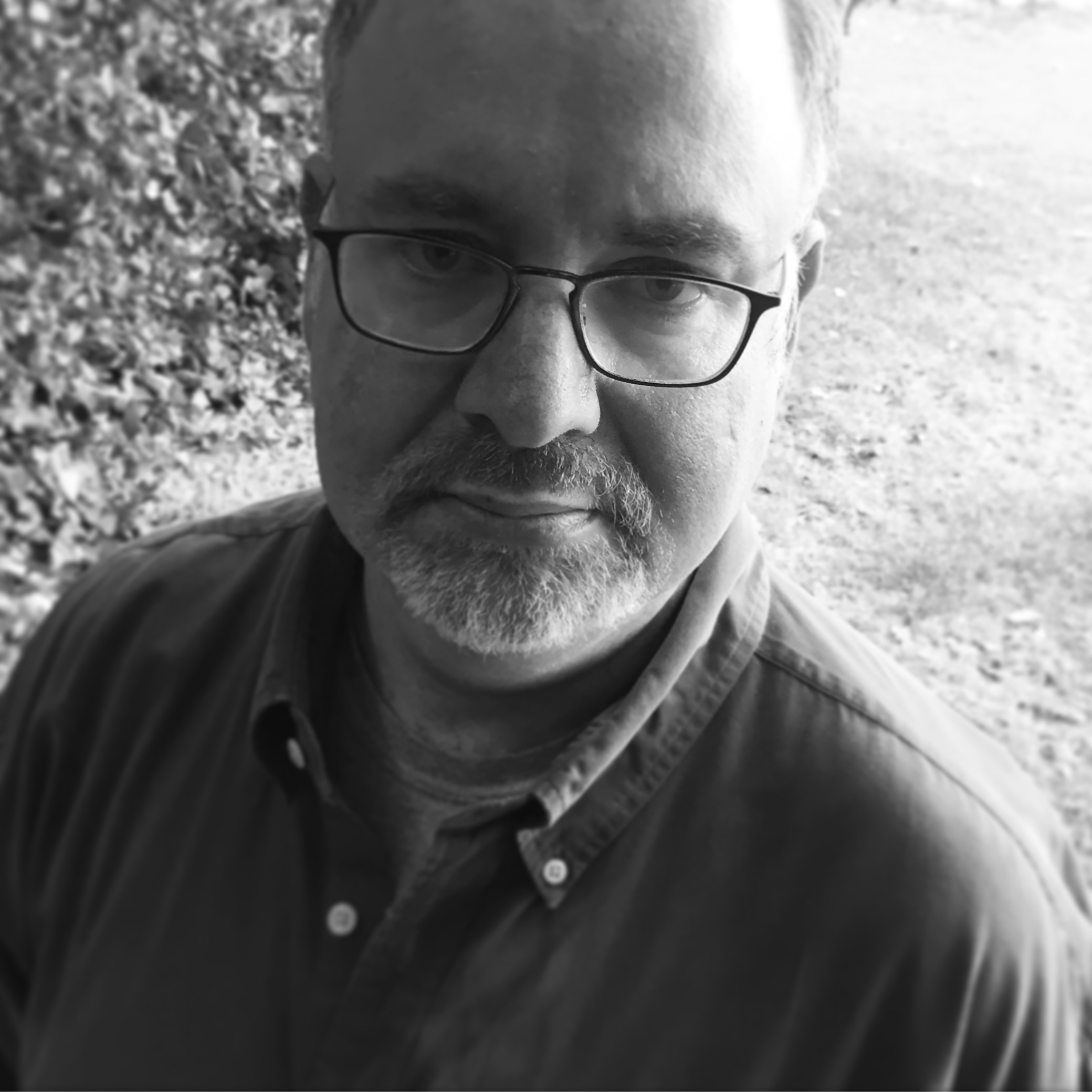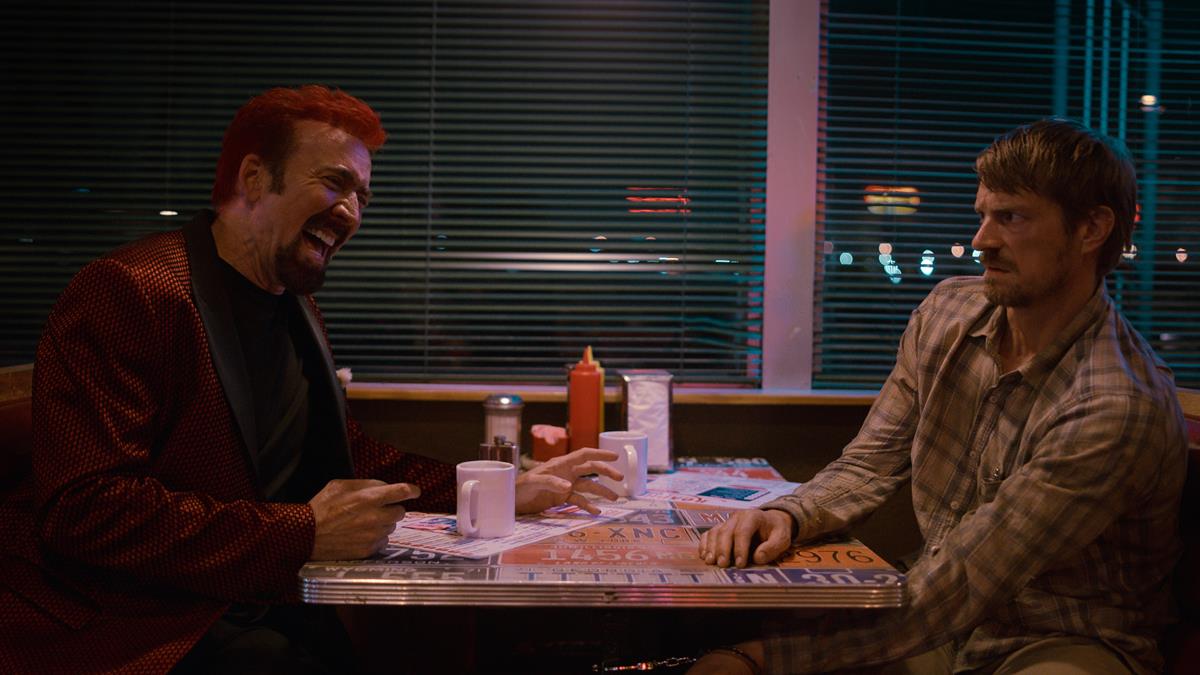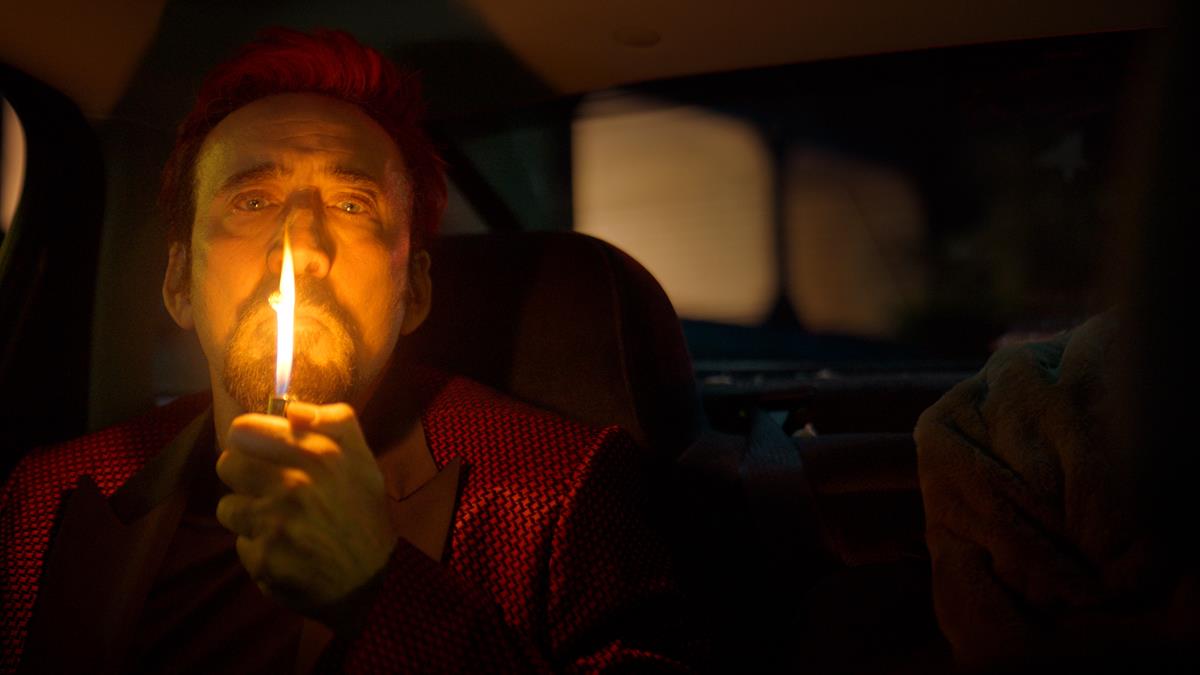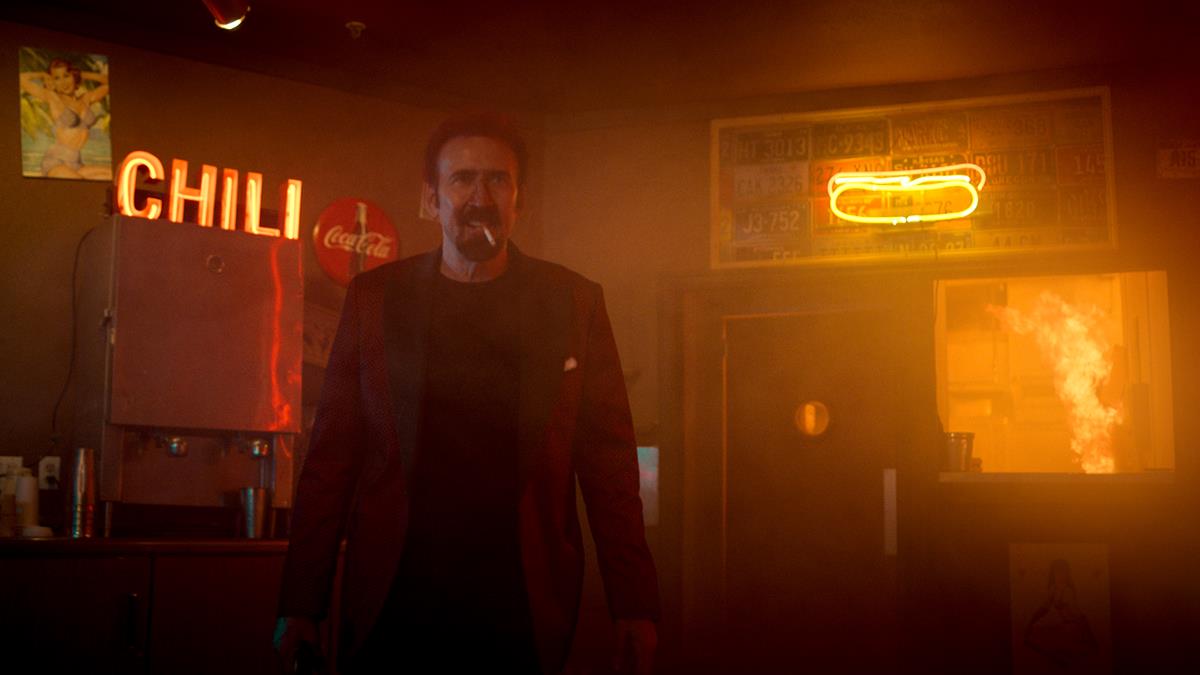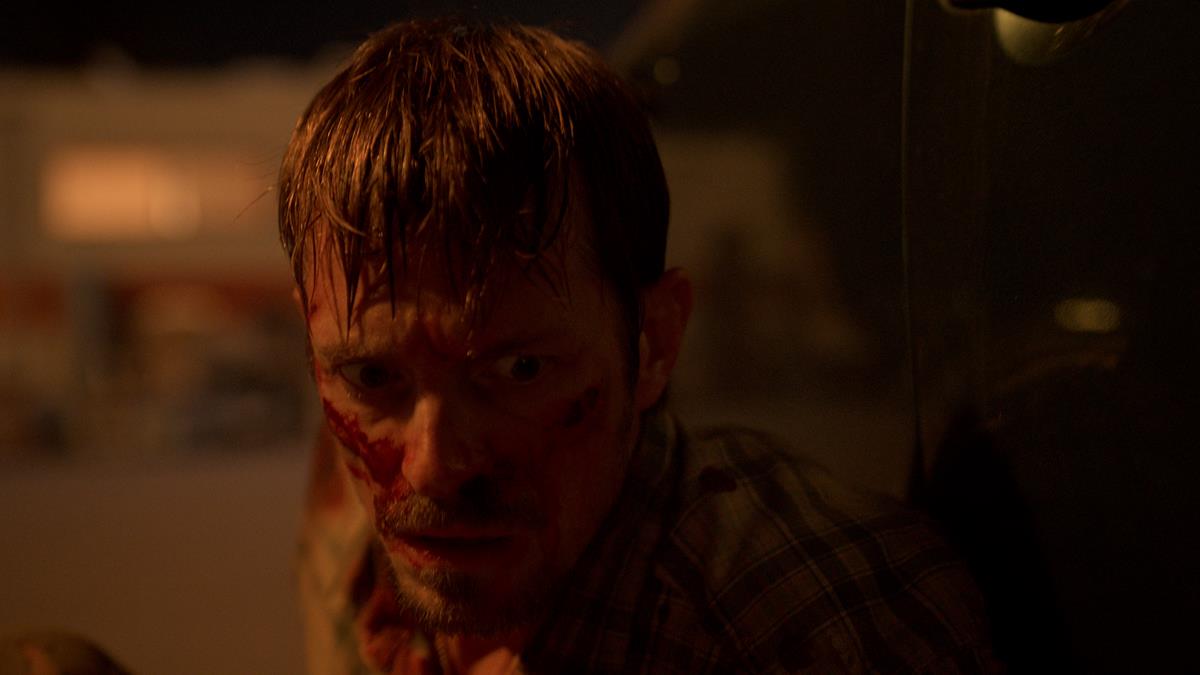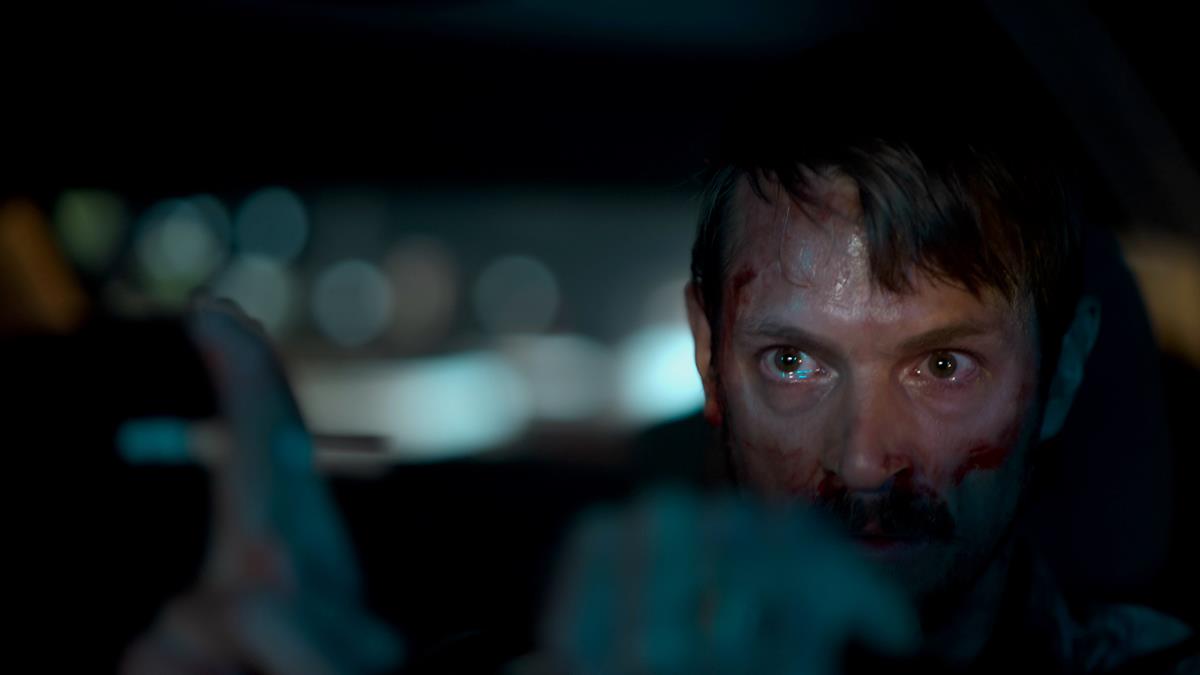Video courtesy of Vū
TL;DR
- Much of the new Nicolas Cage movie “Sympathy for the Devil” takes place inside a car, equating to more than a third of the film’s total screen time.
- Initial plans to shoot these car scenes on real streets were disrupted by persistent torrential rains at the Las Vegas location, prompting the production to shift towards virtual production inside the Vū virtual studio.
- Director Yuval Adler and cinematographer Steve Halloran found that using Vū’s LED volume for these shots provided better and more authentic visuals faster than possible with traditional on-road or greenscreen filming.
- The Vū studio allowed for genuine reflections on the car’s glass, enhancing the realism of the shots. This shift in filming methodology led to a significant increase in efficiency, with Adler obtaining about 12 minutes of material in a day compared to potentially just one shot using traditional methods. Learn more in the video above.
A significant portion of the new Nicolas Cage movie, Sympathy for the Devil, unfolds inside a car as Cage’s terrifyingly histrionic character forces the driver (Joel Kinnaman) to drive him at gunpoint, committing horrible acts of violence along the way.
While writer/director Yuval Adler initially planned to shoot those scenes with a real along with the attendant headaches and delays of street closures, camera cars and rigs, his plans were undone by the prolonged torrential rains that plagued the Las Vegas location. So, the production decided to pivot and shoot all the car shots, which comprise more than one third of the film’s 90-minute screen time, inside the Vū virtual studio.
Yuval and cinematographer Steve Halloran report that shooting these shots from inside an LED volume enabled them to get better-looking shots much more quickly than they likely could have shooting out on real roads or on a greenscreen stage.
“When you have green screen or blue screen behind a car,” Halloran says, “it’s a lot harder to get authentic reflections in the glass. You put a car in the volume and put [a virtual] environment around it and reflections on top,” and you’re already closer to a shot that looks real.”
Yuval much preferred shooting in front of the LED wall “as opposed to being outside in a car, which is an absolute nightmare.” Comparing the two approaches, the director says with the former approach a shoot can wind up with something like one shot in a day, while on Sympathy, he was able to come away with about 12 minutes of material in the same timeframe.
In an interview for the Panavision website, Holleran outlined his creative approach further, noting that he got his start as a fine art photographer, inspired by the work of photographers like Henri Prestes and Christophe Jacrot, “who work heavily with surrealistic, hazy textures,” he said.
“I wanted there to be something akin to a soft veil across the image, as if we were in a nightmare upside-down world. The other reference was Las Vegas’ Neon Museum, which is a great boneyard of old neon lights from the city. Walking the museum at night was a wonderful playground for color inspiration, say the way primaries fade and turn strange with time. Then ultimately, it’s the themes in the film that have the final say.”
The DP also detailed his decision to shoot with Panaspeed optics sourced from Panavision Woodland Hills. “Often when choosing lenses, I start with two sets of parameters which don’t overtly align,” he said.
“On Sympathy, my first set of needs were lenses that were fast, lightweight, and had a range that leaned towards the wide side. This instantly cut out a large chunk of glass, much of it vintage, some modern. Then I wanted a specific creative look, for instance a set of glass that bloomed the highlights, had heavy halation, lifted blacks, with a cat-eye effect. Those prerequisites didn’t already exist together or were not readily available, so we turned to the modern Panaspeeds for their customizability, so we could ‘tune’ a look into a set of lenses that matched my technical specs.”
Sympathy for the Devil is “a surrealist pop-nightmare thriller set on the forgotten edges of Vegas,” Holleran says. “It’s got melancholy and rage fighting for space in front of the lens. We’re exploring the in-betweens of good and bad, truth and lies, past and present, right and wrong — both in the script and with the cinematography. It has upside-down, head-turning relativity at its heart, with who is good and what is true coming into question, and so the film’s look leans into asking these questions of the audience subjectively through composition, movement and color choice.”
READ MORE: Surreal Sympathies (Panavision)
Sympathy for the Devil, a film Yuval promises will offer “dark humor, violence and truth,” is open in theaters and available on streaming platforms. (Of course, those attributes are icing on the cake when you’re talking about a movie with Nicolas Cage doing full-on Nicolas Cage.)
You Might Also Like
- Virtual Production Fun and Fundamentals
- Evaluating LED Panels for Virtual Production
- Learn More About Virtual Production at NAB Show New York

